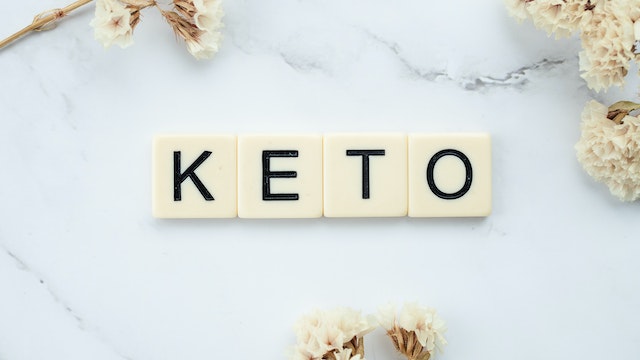Signs You’re in Ketosis Without Testing: Listen to Your Body
Many are turning to the ketogenic diet to shed pounds and improve health. Yet, one common concern is how to know if you’re actually entering ketosis. Typically, testing involves blood, breath, or urine tests, but what if there were signs you’re in ketosis without testing?
Skepticism arises as many wonder if it’s possible to identify these signs without medical tests accurately. The answer is yes, and recognizing these signs of ketosis is crucial for success on this diet.
This article will guide you through the various signs and symptoms that indicate your body is in ketosis. That way, you can be confident in your ketogenic journey without constant testing. Read on to unveil these signs and optimize your approach to keto.
Overview of the Ketogenic Diet and Goals
Before we discuss the signs you’re in ketosis without testing, let’s get to know the ketogenic diet. The ketogenic diet, commonly known as keto, is a low-carb, high-fat, and moderate-protein diet with several goals:
- Induce ketosis. One of the main goals of the keto diet is to put your body in a metabolic state called ketosis. This is a state where your body becomes incredibly efficient at burning fat for energy. It also converts fat into ketones in the liver, which supplies energy to the brain.
- Promote weight loss. The keto diet aims to prompt your body to use fat for fuel instead of carbohydrates. This shift encourages your body to use its stored fat for energy, ultimately leading to weight loss.
- Control blood sugar levels. The keto diet helps control blood sugar levels by restricting carbohydrate intake, making it a popular choice for those looking to manage diabetes.
- Improve cognitive function. The production of ketones supplies fuel to brain cells, improving cognitive functions.
- Increase energy and endurance. Athletes often favor the keto diet as it helps in increasing energy levels and endurance.

What Happens During Ketosis?
Ketosis occurs when the body uses ketones instead of glucose for energy due to low carbohydrate intake. This is how it happens:
- Decrease in insulin levels. A reduction in carbohydrate consumption leads to lower levels of insulin release.
- Depletion of glycogen. Subsequently, the body depletes its reserves of glycogen.
- Increase in fat breakdown. This triggers the body to convert fat into ketones.
- Utilization of ketones. Various tissues then utilize these ketones as their primary source of energy.
- Suppression of appetite. This state of ketosis naturally suppresses appetite.
- Loss of water and electrolytes. Concurrently, there is an increase in the excretion of sodium.
- Reduction of Inflammation. Ketones also have properties that help to reduce inflammation in the body.
- Increase in fat loss: The body optimizes using fat as its primary energy source.

9 Signs You’re in Ketosis Without Testing
Not everyone has the time, money, or desire to test their ketone levels regularly. Fortunately, your body shows several signs of whether you’re in ketosis and whether your diet is working. Knowing the signs you’re in ketosis without testing can be incredibly helpful. Let’s go over them one by one.
1. Signs You’re in Ketosis Without Testing: Increased Thirst
Increased thirst is one of the first signs you’re in ketosis without testing. When the body burns stored fat for energy, it enters ketone production. Your body expels these ketones through urine, sweat, and breath, resulting in fluid loss, dehydration, and increased thirst. Starting a ketogenic diet also prompts your body to release excess water, increasing your need for fluids.
Dehydration often occurs at the beginning of a ketogenic diet. Eating fewer carbohydrates means your body retains less water, as carbs are stored with water. One of the keto diet side effects is making your kidneys expel more sodium. This can cause frequent urination and increased dehydration.
Drinking plenty of water throughout the day is essential to prevent dehydration while in ketosis. Aim for at least 8-10 glasses of water daily, or more if you’re physically active. Additionally, consider adding a pinch of salt to your water or consuming broth to help replenish lost electrolytes.

2. Signs You’re in Ketosis Without Testing: Changes in Sleep
Another sign that you’re in ketosis without testing is a change in sleep patterns. Some people report feeling more energized and needing less sleep, while others struggle with falling or staying asleep.
Ketosis impacts sleep in multiple ways. Initially, reducing carbohydrates can lead to sleep disturbances, as carbs aid in producing serotonin, the sleep-regulating hormone. A decrease in serotonin levels can result in sleep issues. However, as your body adapts to ketosis, your sleep may improve.
To improve your sleep while on a ketogenic diet, try the following tips:
- Stick to a regular sleep schedule.
- Create a relaxing bedtime routine.
- Limit caffeine and alcohol intake.
- Exercise regularly, but not too close to bedtime.
- Make your sleep environment comfortable and conducive to sleep.

3. Signs You’re in Ketosis Without Testing: Bad Breath
Bad breath, or keto breath, is one of the common signs you’re in ketosis without testing. When your body breaks down fat for energy, it produces more ketones. Acetone is one of the three primary ketones produced during this process. The result can lead to a metallic taste or bad breath.
While keto breath can be off-putting, it is usually temporary. Hence, it will likely diminish as your body adjusts to ketosis. In the meantime, here are some tips for managing keto breath:
- Increase water intake. Drinking plenty of water can help flush out the ketones in your body through urine. This reduces the concentration of acetone expelled via breath.
- Maintain oral hygiene. Regular brushing, flossing, and tongue scraper can help remove bacteria and food particles contributing to bad breath.
- Chew sugar-free gum or mints. Sugar-free gum or mints can help to increase saliva production and mask bad breath.
- Use a breath freshener. A breath freshener that doesn’t contain sugar can help manage keto breath.
- Eat less protein. Too much protein can worsen bad breath, so balance your protein intake with fats.
- Drink green tea. Green tea has antioxidant properties that can help to freshen your breath.
- Exercise regularly. Exercise can help to burn ketones for fuel, reducing the concentration of ketones expelled via breath.
Remember, keto breath is temporary and usually subsides after a few weeks as your body adapts to ketosis. If bad breath persists, consult your healthcare provider, which may indicate other health risks.

4. Signs You’re in Ketosis Without Testing: Headaches
Headaches are one of the typical signs you’re in ketosis without testing. How? First, when you switch to a low-carb diet, your body uses up its stored sugar, called glycogen. Each gram of glycogen is stored with about 3 grams of water. So, as your body uses up its glycogen, you lose a lot of water, which can lead to dehydration and, consequently, headaches.
To prevent or treat headaches when starting a ketogenic diet, try the following tips:
- Drink plenty of water to stay hydrated.
- Consume adequate amounts of sodium and other electrolytes.
- Eat small, frequent meals to help regulate blood sugar levels.
- Get enough rest and manage stress.
5. Signs You’re in Ketosis Without Testing: Weight Loss
Weight loss is a common goal for many starting ketogenic diets. It is often one of the common signs you’re in ketosis without testing. Consuming fewer carbohydrates makes your body seek an alternative fuel source. It breaks down stored fat into ketones, which are used for energy. This process causes weight loss as your body uses fat for fuel.
To maximize weight loss on a ketogenic diet, follow these tips:
- Eat a well-balanced diet with healthy fats, moderate protein, and low carbohydrates.
- Monitor caloric intake to avoid consuming too many calories.
- Exercise regularly to burn excess calories and speed up weight loss.
- Get enough sleep, as lack of sleep can lead to weight gain.
6. Signs You’re in Ketosis Without Testing: Muscle Cramps and Spasms
When you start a ketogenic diet, your body expels excess water and electrolytes, leading to dehydration and a loss of minerals such as sodium, potassium, and magnesium. These minerals are essential for muscle function, and their depletion can lead to muscle cramps and spasms. These occur as one of the signs you’re in ketosis without testing.
To prevent or treat muscle cramps and spasms while on a ketogenic diet, try the following tips:
- Drink plenty of water to stay hydrated.
- Consume adequate amounts of salt and other electrolytes.
- Eat magnesium-rich foods such as nuts, seeds, and leafy greens.
- Stretch regularly and engage in light to moderate exercise.
7. Signs You’re in Ketosis Without Testing: Fatigue and Weakness
Fatigue and weakness are common signs to find out that you’re in ketosis without testing. This is often due to a temporary drop in blood sugar levels and decreased glycogen stores.
When you start a ketogenic diet, your body has to switch from burning carbohydrates to burning fat for energy. This transition can lead to a temporary drop in blood sugar levels and a decrease in glycogen stores. As a result, it leads to fatigue and weakness.
To boost your energy levels while on a ketogenic diet, try the following tips:
- Eat small, frequent meals to help regulate blood sugar levels.
- Exercise regularly to increase your energy levels and improve your mood.
- Get enough sleep each night, as lack of sleep can lead to fatigue.
- Stay hydrated to prevent fatigue and decreased energy levels.
- Try to limit your caffeine intake to prevent energy crashes. Avoid drinking caffeine in the afternoon and evening.

8. Signs You’re in Ketosis Without Testing: Stomach Complaints
Digestive issues, such as nausea, diarrhea, and constipation, are typical signs you’re in ketosis without testing. Why? When you start a ketogenic diet, you may consume fewer fruits, vegetables, and grains, all high in fiber.
A decrease in fiber intake can lead to constipation. The change in diet can also lead to a temporary imbalance in gut bacteria, leading to diarrhea or nausea.
To maintain digestive health while on a ketogenic diet, try the following tips:
- Eat plenty of non-starchy vegetables, nuts, and seeds to increase fiber intake.
- Drink plenty of water to help prevent constipation.
- Consider taking a probiotic supplement to help balance your gut bacteria.
9. Signs You’re in Ketosis Without Testing: Increased Urination
Increased urination is one of the signs you’re in ketosis without testing. It occurs when your body uses up glycogen stores, releasing water and excreting excess ketones, leading to more frequent urination. This can also cause an electrolyte imbalance, increasing thirst and further urination.
To manage this, you need to:
- Stay hydrated by drinking plenty of water
- Replenish electrolytes by consuming electrolyte-rich foods like avocados, nuts, seeds, and leafy greens.
Is Ketosis Safe for Everyone?
A long-term ketogenic diet might not suit everyone, and its effects can vary from person to person. Recognizing the signs you’re in ketosis without testing can be helpful for those following a ketogenic diet. It’s also beneficial for those who want to maintain a less invasive and more intuitive approach to their diet. Some potential concerns with a long-term ketogenic diet include:
- Nutrient deficiencies. The ketogenic diet restricts many foods that are rich in vital nutrients. This can lead to deficiencies in essential vitamins and minerals if the diet is not well-planned.
- Liver and kidney problems. The increased workload on the liver and kidneys to process the byproducts of fat metabolism. It could be a concern for those with pre-existing liver or kidney conditions.
- Dyslipidemia. A very high-fat diet can lead to elevated LDL (bad) cholesterol levels in some individuals, increasing the risk of heart disease.
- Osteoporosis. There are concerns that a long-term ketogenic diet might be associated with a loss of bone density.
- Social and lifestyle considerations. Following a very restrictive diet can be challenging socially and mentally in the long run.
Begin Your Journey With ModernFit!
Recognizing the signs you’re in ketosis without testing is vital for your success on the ketogenic diet. Manage symptoms effectively by hydrating, balancing diet, exercising, and ensuring enough sleep.
Turn to ModernFit for all-encompassing support on your health journey. Our platform offers a wealth of diet, exercise, and healthy living knowledge, enabling you to make well-informed health decisions. Begin your journey with us today and stride confidently towards a healthier, fitter future!


